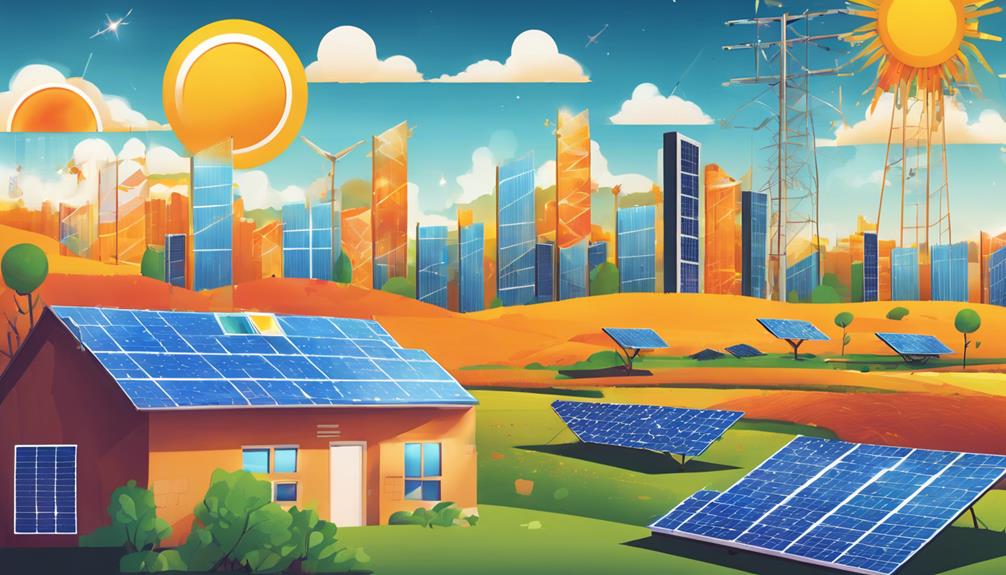
What Are Water Cooled Solar Panels?
Water cooled solar panels are an innovative technology designed to enhance the efficiency of solar energy systems. Unlike traditional solar panels that rely solely on sunlight to generate electricity, water cooled solar panels use water as a cooling medium to maintain optimal operating temperatures. This technology is crucial because solar panels can lose efficiency when they overheat. By integrating a cooling system, these panels can operate at lower temperatures, resulting in improved energy output. This guide will explore the various aspects of water cooled solar panels, their benefits, installation processes, and future prospects.
The Science Behind Water Cooled Solar Panels
The primary principle behind water cooled solar panels is thermoregulation. When solar panels absorb sunlight, they convert it into electricity, generating heat in the process. Excess heat can cause the panels to operate less efficiently, leading to reduced energy production. Water cooled solar panels mitigate this issue by circulating water through channels in or around the panels. This process absorbs heat, maintaining a lower temperature and optimizing performance. Additionally, this cooling method can lead to a more consistent energy output, particularly in regions with high temperatures.
Benefits of Using Water Cooled Solar Panels
Water cooled solar panels offer several advantages over traditional solar technologies. First and foremost, they can significantly increase energy efficiency. Studies have shown that cooling systems can enhance the energy output of solar panels by as much as 20% in hot climates. Secondly, these panels tend to have a longer lifespan due to reduced thermal stress, which can lead to fewer maintenance issues and lower replacement costs over time. Furthermore, water cooled systems can also enable better performance in cloudy or high-humidity environments, making them versatile for various climates.
Installation Process of Water Cooled Solar Panels
Installing water cooled solar panels involves several key steps. Initially, a site assessment is conducted to determine the most suitable location for the panels. This assessment includes evaluating sunlight exposure, shading, and the availability of water sources. Next, the solar panels are mounted, typically on rooftops or ground mounts, and connected to a specially designed cooling system that circulates water. This system may include pumps, pipes, and storage tanks, all working together to maintain optimal temperatures. It’s essential to engage with qualified professionals during this process to ensure a successful installation and optimal performance.
Comparing Water Cooled Solar Panels to Traditional Models
When comparing water cooled solar panels to traditional solar panels, it’s essential to consider various factors, including efficiency, cost, and maintenance. Traditional solar panels are generally less expensive upfront; however, their efficiency can suffer in hotter climates. In contrast, while water cooled solar panels may require a more significant initial investment due to the cooling system, the long-term benefits often outweigh the costs. Over time, the increased energy output and reduced maintenance requirements of water cooled systems can lead to significant savings on energy bills and an improved return on investment (ROI).
Environmental Impact of Water Cooled Solar Panels
Water cooled solar panels also have a positive environmental impact. By increasing the efficiency of solar energy generation, they help reduce reliance on fossil fuels and decrease greenhouse gas emissions. Additionally, the cooling process involves using water, which can be sourced sustainably in many regions. This aspect aligns with global efforts to promote renewable energy solutions and combat climate change. Moreover, the technology can be integrated with other renewable energy sources, such as wind or hydroelectric power, creating a more comprehensive and sustainable energy system.
Challenges and Considerations for Implementation
Despite their many benefits, water cooled solar panels come with certain challenges that potential users should consider. One significant factor is the availability and management of water resources. In areas where water scarcity is a concern, utilizing water cooled systems may not be feasible. Additionally, the complexity of the cooling system can lead to higher maintenance requirements, necessitating expert knowledge for repairs and upkeep. It’s crucial for homeowners and businesses considering this technology to conduct thorough research and consult with professionals to assess whether water cooled solar panels are suitable for their specific needs.
The Future of Water Cooled Solar Panels
Looking ahead, the future of water cooled solar panels appears promising. As technology advances, we can expect improvements in efficiency and cost-effectiveness, making these systems more accessible to a broader audience. Research is ongoing to develop more sustainable and efficient cooling technologies, potentially utilizing alternative coolants or innovative designs that reduce water use. As global demand for renewable energy continues to rise, water cooled solar panels are poised to play a vital role in the transition to a more sustainable energy landscape. By embracing these advancements, we can work towards a greener and more energy-efficient future.
Conclusion
In conclusion, water cooled solar panels represent an exciting and innovative solution for enhancing solar energy efficiency. With their ability to regulate temperature, increase energy output, and contribute positively to environmental efforts, they offer a compelling alternative to traditional solar technology. As the technology continues to evolve, more homeowners and businesses may find themselves adopting water cooled systems as part of their renewable energy strategy. By understanding the benefits, challenges, and future prospects of water cooled solar panels, we can make informed decisions that contribute to a sustainable energy future.





